Excerpts from Jim Conrad's
Naturalist Newsletter
Entry dated March 10, 2024, from notes taken about 2kms west of Higuerillas, Municipality of Cadereyta de Montes; N20.9086°, W99.7865°, elevation ~1760 meters (~5760 feet); on greywacke sandstone cap of hill; area constituting a narrow belt of the extreme southern extension of the Chihuahuan Desert, Meridional Subregion; central Querétaro state, MÉXICO
HECHTIA ZAMUDIOI
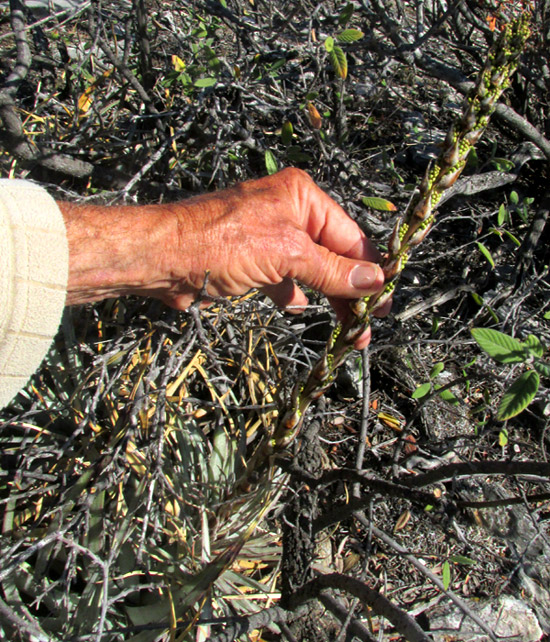
The windswept, sun-parched hilltop was largely bare rock spotted with clumps of Lechugilla, and occasional burro-gnawed thickets of spiny scrub emerging from cracks and thin-soiled depressions. Amid such a thicket, the above spike-like, panicle-type inflorescence bore numerous green flower buds clustered behind large bracts.
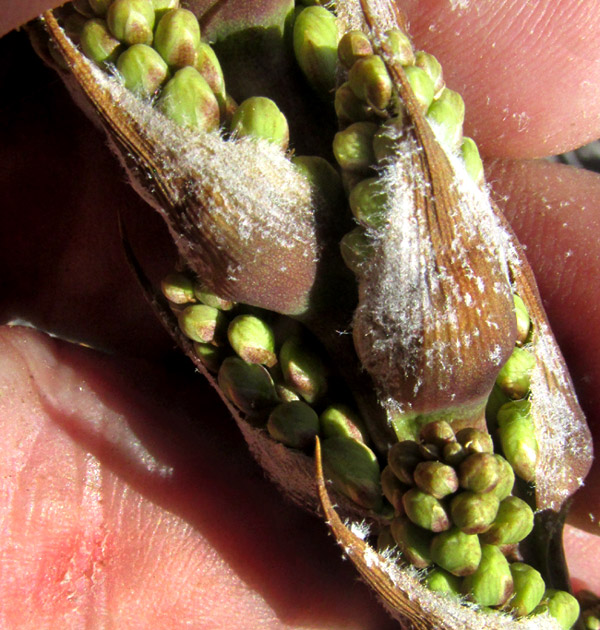
Up close, the inflorescence stalk, or rachis, bore large, brown, papery, sharp-tipped bracts subtending clusters of green flower buds. White fungus appeared to grow on the bracts, which was hard to explain after the several recent rainless months.
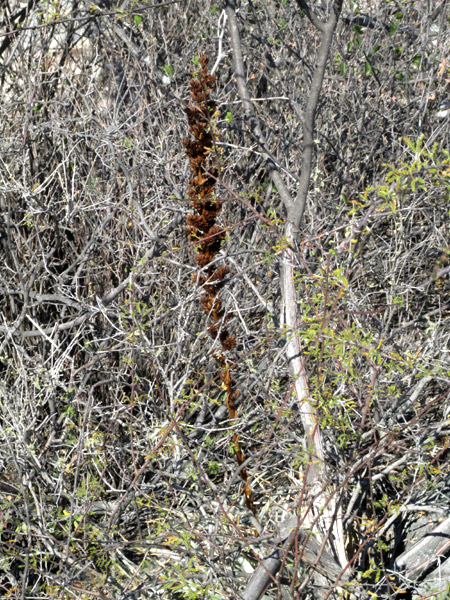
A few meters away, on another plant last season's brown fruiting stalk was well protected from the burros by dense, spiny scrub.
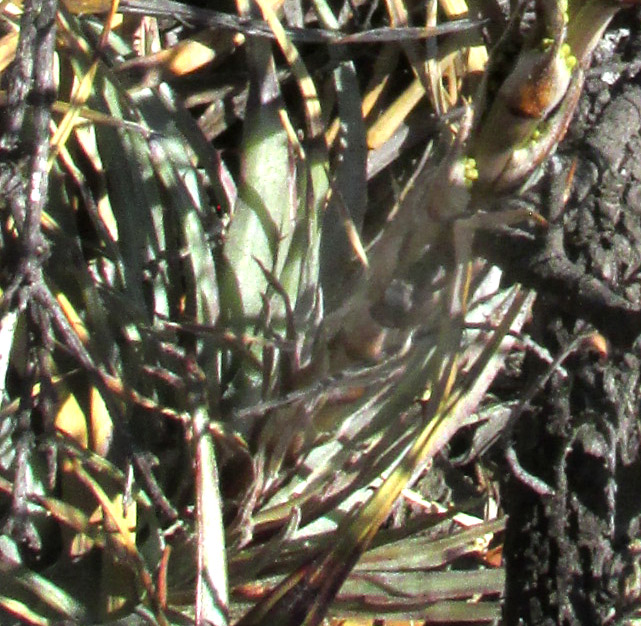
The above cluttered, ambiguous picture is useful because at its top, right corner it's seen that the stalk's scales with flower buds behind them are present nearly to the stalk's bottom. Also, note that the plant's blades appear to bear spineless margins, or inconspicuous, widely spaced ones.
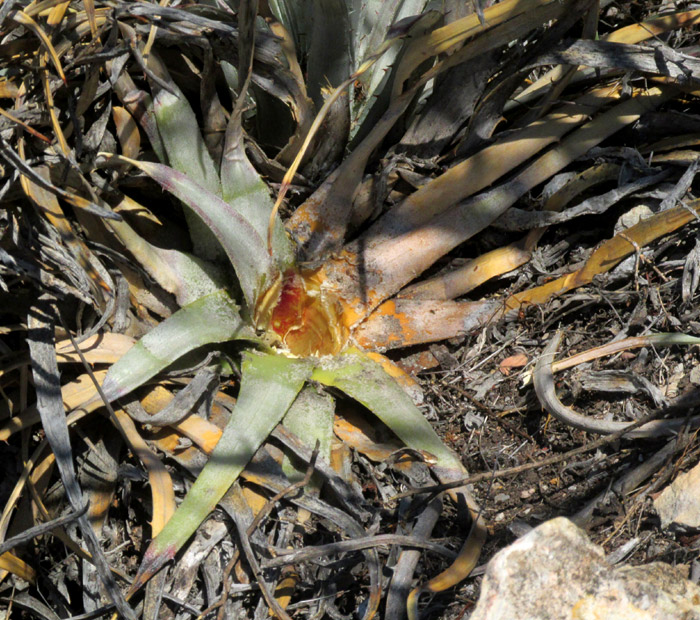
The above shows a member of the community whose center has been hollowed out by a hungry feral burro.
Our plant with an inflorescence arising from the center of a rosette of long, sharp-tipped leaves apparently without spines along the margins seemed to belong to the agave subfamily of the Asparagus Family. However, in that entire subfamily I found nothing looking like our plant, except possibly Beschorneria yuccoides.
Unsatisfied with that ID I sought help by checking into the "Agavaceae Talk" branch of the "Xeric Plant Discussion Forum" at AgaveVille.Org. Some sharp folks hang out there, and within a couple of hours Minime8484 in Arizona posted that our plant appeared to belong to the genus Hechtia.
But, Hechtia is a bromeliad, of the Bromeliad Family, the Bromeliaceae, and species in that genus are understood to bear spines or teeth along their blade margins. Bromeliads are more closely related to grasses than to agaves; they're thought of as mostly tree-dwelling epiphytes. However, relatively few kinds live on rocks and/or the ground, such as the Pitcairnia ringens we met years ago, also here in Querétaro state, so I took the suggestion seriously.
The Flora del Bajío volume treating bromeliads documents seven Hechtia species occurring here in Querétaro state. Of those seven species, if your plant's blades are 3.5-5cm wide (1.8-2.0 inches), which is the case with our plant, it's HECHTIA ZAMUDIOI, with no English name.
The few Internet images of Hechtia zamudioi show features agreeing with those of our plant, except that our plant's blades bear no conspicuous spines, or, if spines exist, they're inconspicuous or widely spaced. In the above cluttered picture of the stalk base, two or three recurved spines may be seen on blades of plants other than the one we're featuring; I'd assumed those spines to be on Lechugilla plants, which grew all around, but maybe they're not.
Whatever the case, the Flora del Bajío comments that the genus Hechtia is one of the most problematic members of the Bromeliad Family. That's because species in the genus develop male flowers on one plant and female on another -- they're dioecious; also, preserved herbarium specimens are scarce and incomplete.
Those remarks surely apply particularly to Hechtia zamudioi, because as far as I can determine the species is endemic only to the central drier parts of Querétaro state. Interestingly, the 2010 Flora del Bajío volume treating our species says that Hechtia zamudioi plants are abundant on the inaccessible slopes where they happen to be established. In the area where the above pictures were taken, they existed only in those rare spots the abundant feral burros couldn't get to. The plants' existence depended on being protected by spiny, woody, scrub vegetation around them.
Hechtia zamudioi was introduced to science only in 2008, which probably accounts for the lack of literature reporting traditional uses for it.